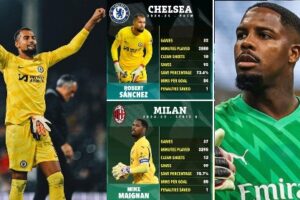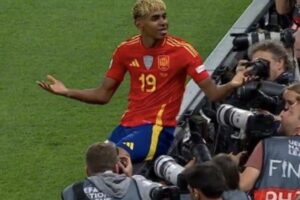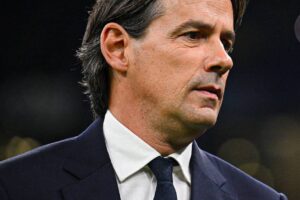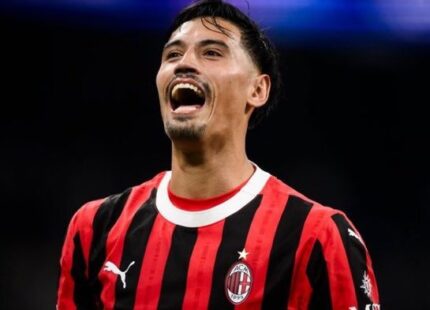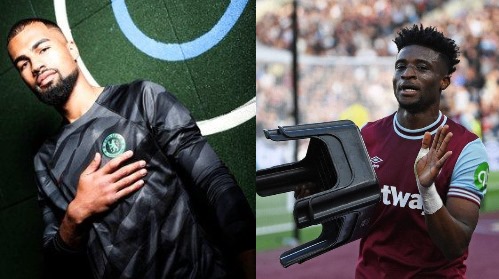When Tijjani Reijnders confessed in May that he spent hours watching Kevin De Bruyne on YouTube, analysing how the Manchester City maestro scanned the pitch before receiving the ball, it was more than a compliment — it was a blueprint for his own career. The 26-year-old Dutch international, currently on the verge of a €55 million transfer to Manchester City from AC Milan, appears to be stepping into the shoes of the very player he once studied.
Notably, Reijnders also admired Barcelona legend Andrés Iniesta in his formative years — an influence that adds to the Guardiola compatibility matrix. Both De Bruyne and Iniesta have served as archetypes of the ideal Guardiola midfielder: technically brilliant, spatially aware, and multi-functional. Reijnders has attempted to marry the intelligence of Iniesta’s short-passing game with De Bruyne’s incisiveness and pitch awareness, and it shows in his performances.
Why He Fits Guardiola’s Midfield Philosophy
Pep Guardiola demands more than technical quality — his midfielders must think ahead, manage transitions, and operate as passing hubs. Reijnders’ game embodies all those qualities. At Milan, he has frequently taken up the deepest midfield role, receiving the ball from the goalkeeper and setting the tempo with short passes, progressive carries, or off-the-ball movements that break pressing lines.
He doesn’t just pass and admire — he’s always in motion. In one sequence against Bologna, Reijnders initiated an attacking move from his own box with a simple lay-off, sprinted upfield, reclaimed possession, and maintained the flow — all without flamboyance but with supreme tactical intelligence. Guardiola’s teams rely on those repeatable micro-actions that drive their positional play, and Reijnders appears ready-made for such a role.
Shades of Gundogan and Bernardo in His Game
While De Bruyne was his idol, Reijnders’ style more closely mirrors a hybrid of Ilkay Gundogan and Bernardo Silva. He makes late runs into the box like Gundogan and glides into half-spaces with the same subtlety as Bernardo. Data from SkillCorner, which analyses player movement, shows Reijnders ranks similarly to Bernardo in offering support ahead of the ball and creating attacking passing lanes.
Guardiola’s City have long relied on midfielders who are multifunctional — able to drop deep, dictate play, but also contribute goals. With 15 goals across all competitions this past season, Reijnders has shown he’s not just a link-man, but also a finisher. His goal against Spain for the Netherlands — beginning with a deep run and ending in a calm finish — is the type of sequence that City fans have grown used to from their elite midfielders.
The Ball-Carrying Evolution City Need
City’s recent midfield recruits like Mateo Kovacic and Matheus Nunes were intended to address the Premier League’s growing physicality with stronger ball-carriers. But both have faced issues: Kovacic often dribbles into danger, and Nunes has been deemed by Guardiola as lacking the necessary composure to play centrally.
Reijnders, on the other hand, blends carrying with vision. He progresses play with intent, not just energy. His carries aren’t solo missions but part of collective advancement. Unlike Nunes, he doesn’t get caught ahead of the ball unnecessarily, and unlike Kovacic, he seems more secure in decision-making. He also complements January signing Nico Gonzalez, another deep-lying player who has adapted well as a passer more than a dribbler.
Reijnders’ Goalscoring Prowess: The X-Factor
What could truly distinguish Reijnders from recent signings is his consistent goal output. His late-season strike against Real Madrid, where he combined slick footwork with spatial awareness, typifies the modern attacking midfielder Guardiola cherishes. Many of his goals are the culmination of patient build-up, clever movement, and well-timed runs — hallmarks of City’s best moments under Guardiola.
City are entering a new era. With Kevin De Bruyne expected to leave after a decade of brilliance, they need more than just tidy midfielders — they need dynamism, control, and goals. Reijnders offers all three. He is unlikely to be a one-for-one De Bruyne replacement — nobody is — but he represents a balanced blend of technique, intelligence, and attacking instinct. If he continues his upward trajectory, he may not only fill the void but redefine what a Guardiola midfielder looks like in the next phase of Manchester City’s evolution.

